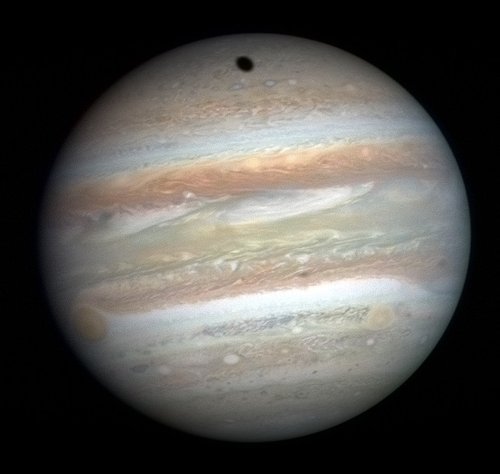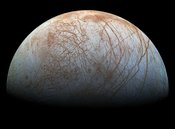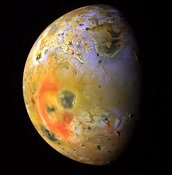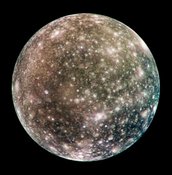Current Info for Observer
as of 07/27/2024 8:14 a.m.
Please login to view current observation details
General Info
as of 07/27/2024 8:14 a.m.
| Type | Planet |
| Constellation | Taurus |
| Magnitude | -1.95 |
| Orbits | Sun |
| Right ascension | 4:49:00.87 (Hours) |
| Declination | 21:44:23.5 (Deg) |
| % illuminated | 99.378 |
| Distance from Earth | 5.60742AU |
| Distance from Sun | 5.03440AU |
| Elongation | -51:14:51.8 |
| Mass | 317.8 ⊕ |
The largest planet | |
☉ Solar Masses ⊕ Earth Masses j Jupiter Masses
Orion 10" Dobsonian
110 points
My first look at Jupiter was through heavy light pollution and humidity so it wasn't very clear, but we could clearly make out 4 if not 5 moons. Looking forward to taking a closer look on a dark and clear night with a stronger eyepiece.
Celestron PowerSeeker 127EQ
100 points
I think it was the first observation me and my brother could do since the weather was pretty bad since January. We were trying to see other stars when we found Jupiter and three of its moons.
It was a pleasant experience, we saw it in B/N because I haven't got filters yet.
Orion Sky View Pro 8" EQ
100 points
First object I saw when I got my telescope. I was able to see three of the moons that night.
Generate a finder chart
The following form will generate a PDF finder chart suitable for printing using to locate objects in the sky with your telescope!
The Date is only really useful for solar system objects, as deep space objects move measurably only on a galactic timescale.
The larger the F.O.V (field of view), the more "zoomed out" the object will appear. It can be helpful to print several charts of the same object with different field of views.
Limiting the magnitude (remember, lower magnitude means brighter!) of stars and objects can make sure your chart is not cluttered with dim objects that you may not be visible to you anyway. The defaults are good, but try experimenting with raising and lowering the values.
Please login to post comments




